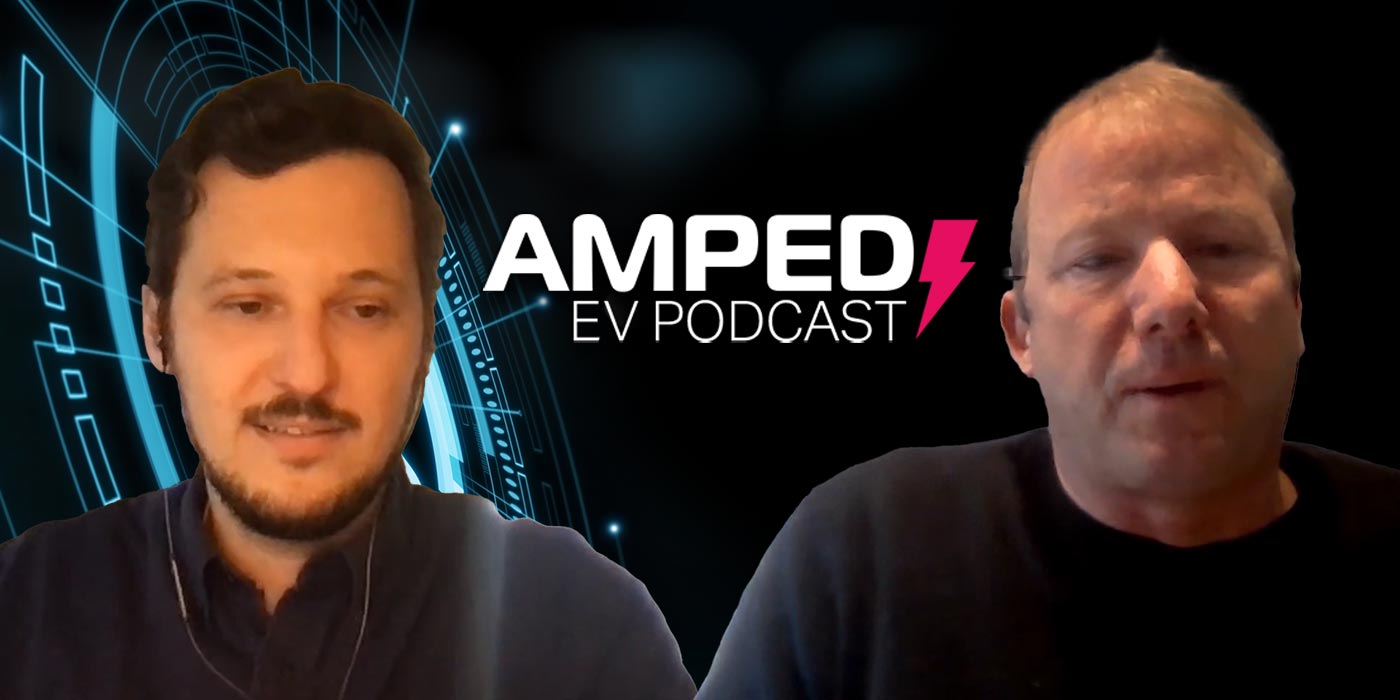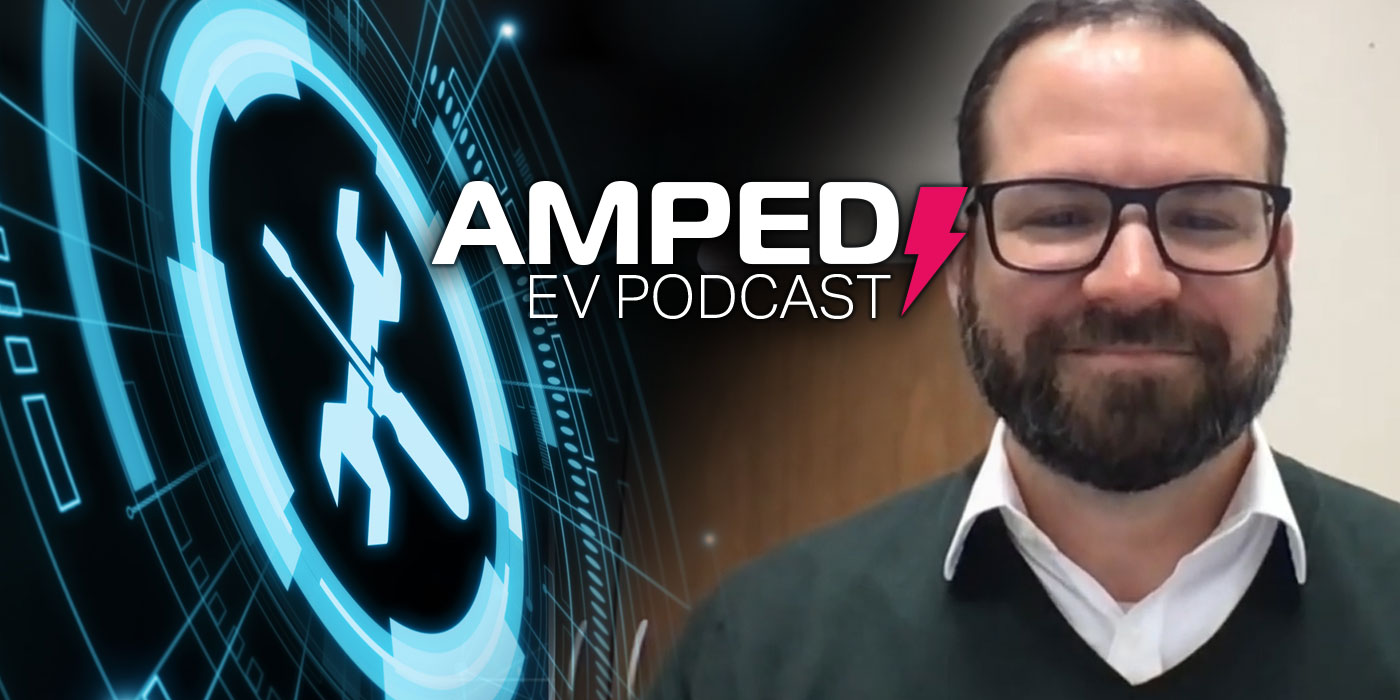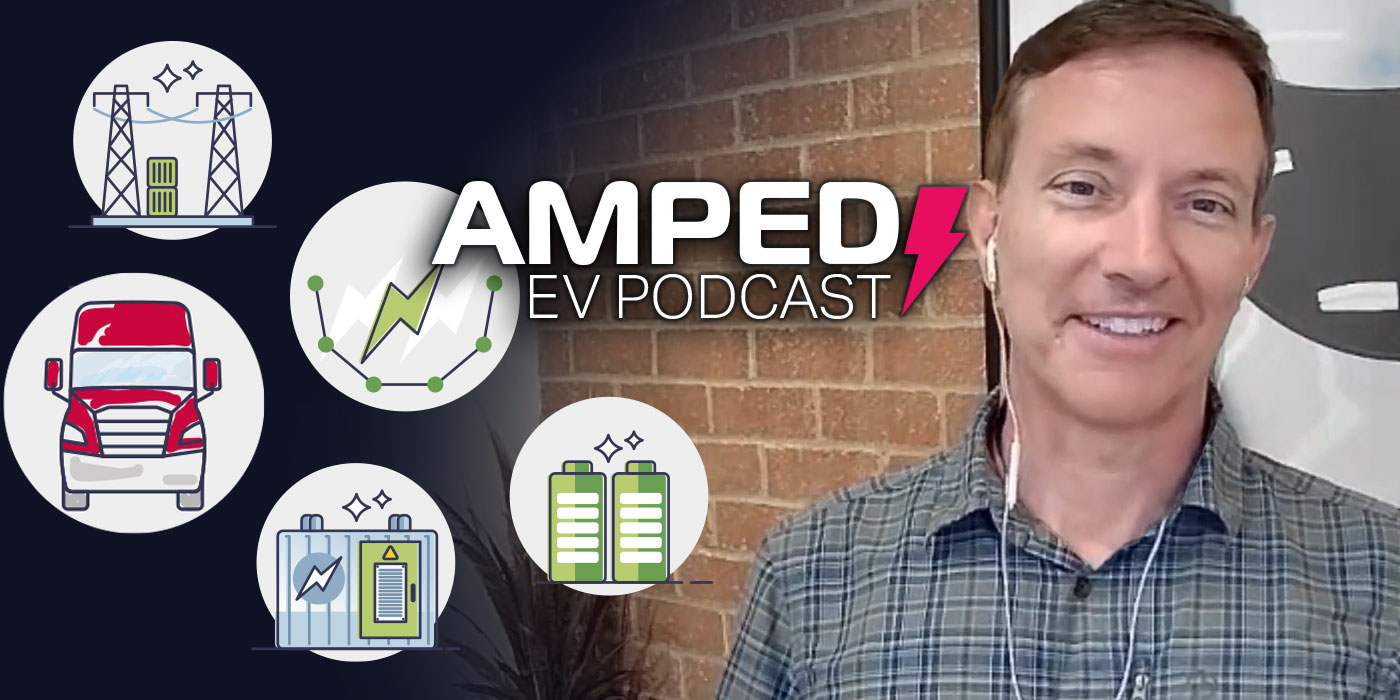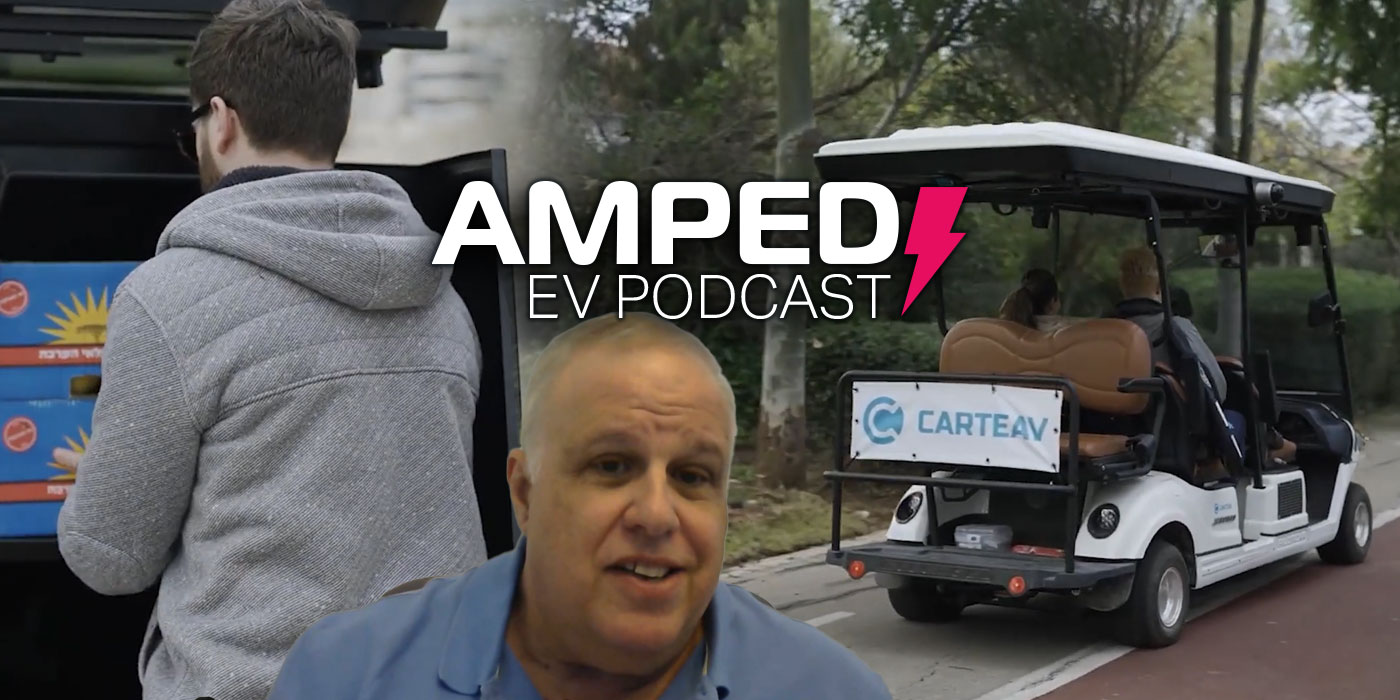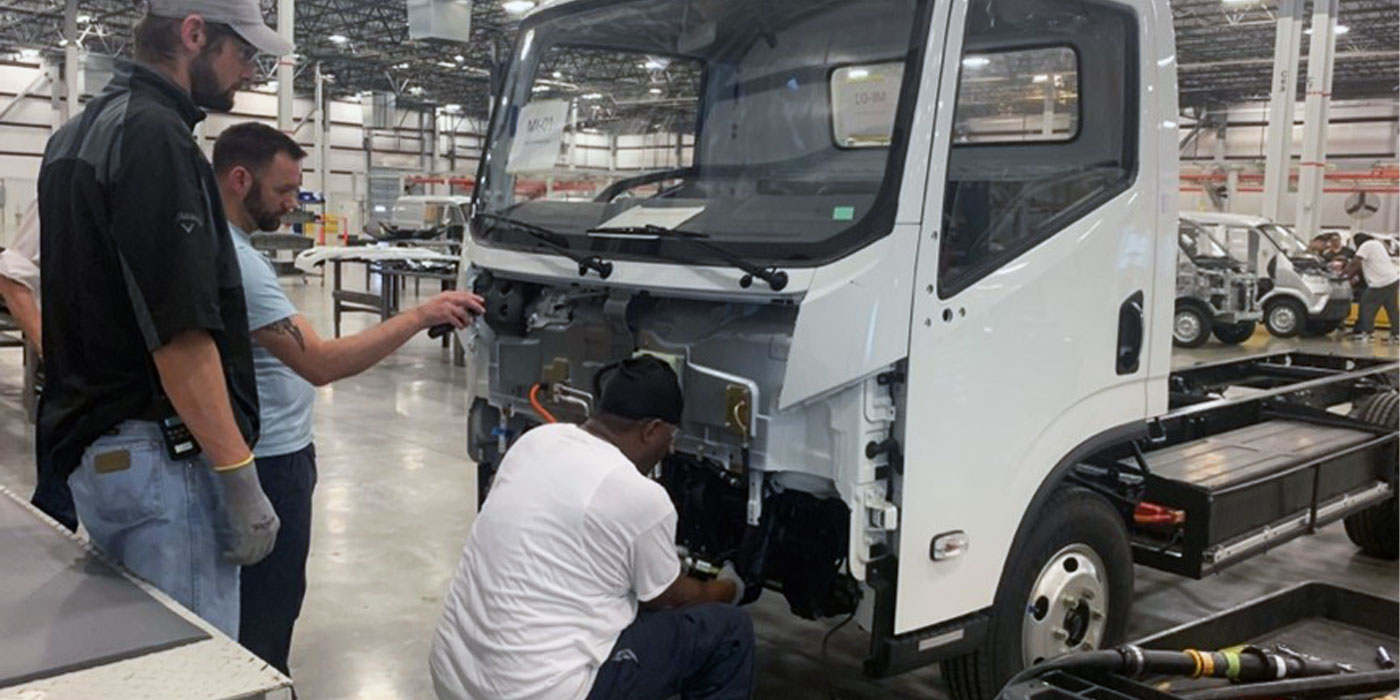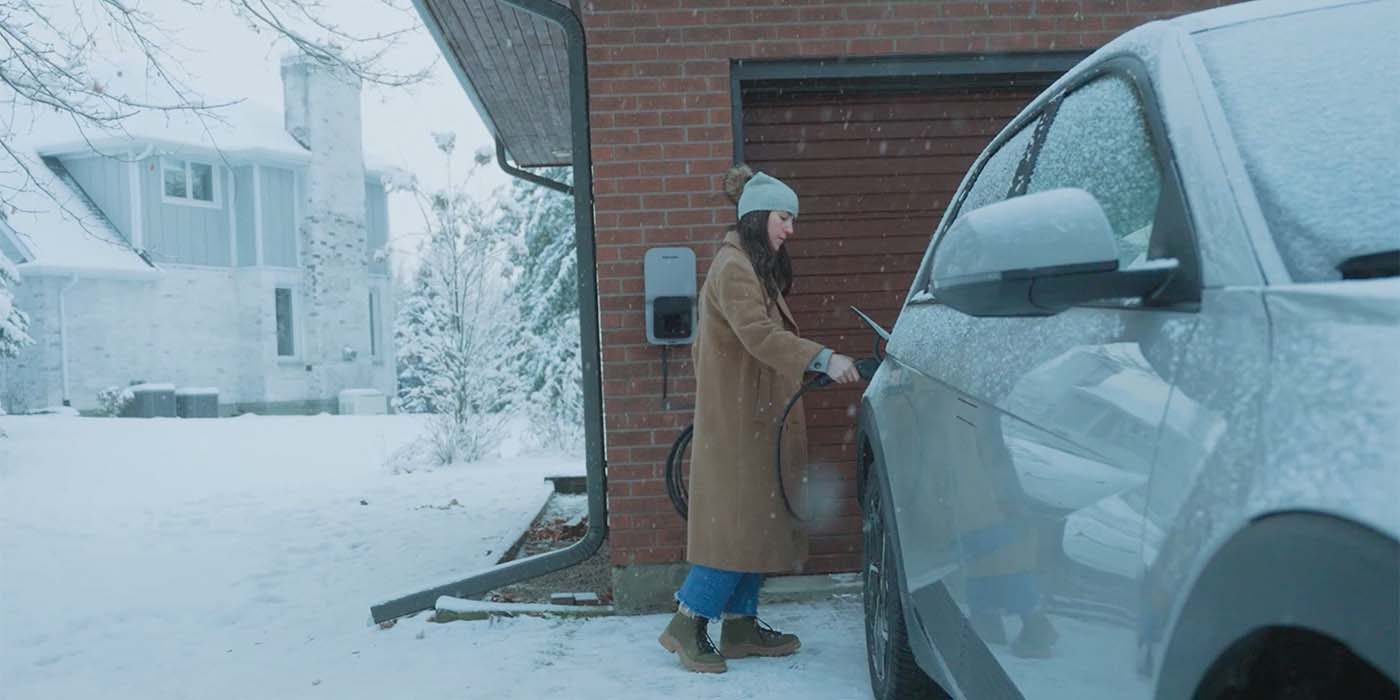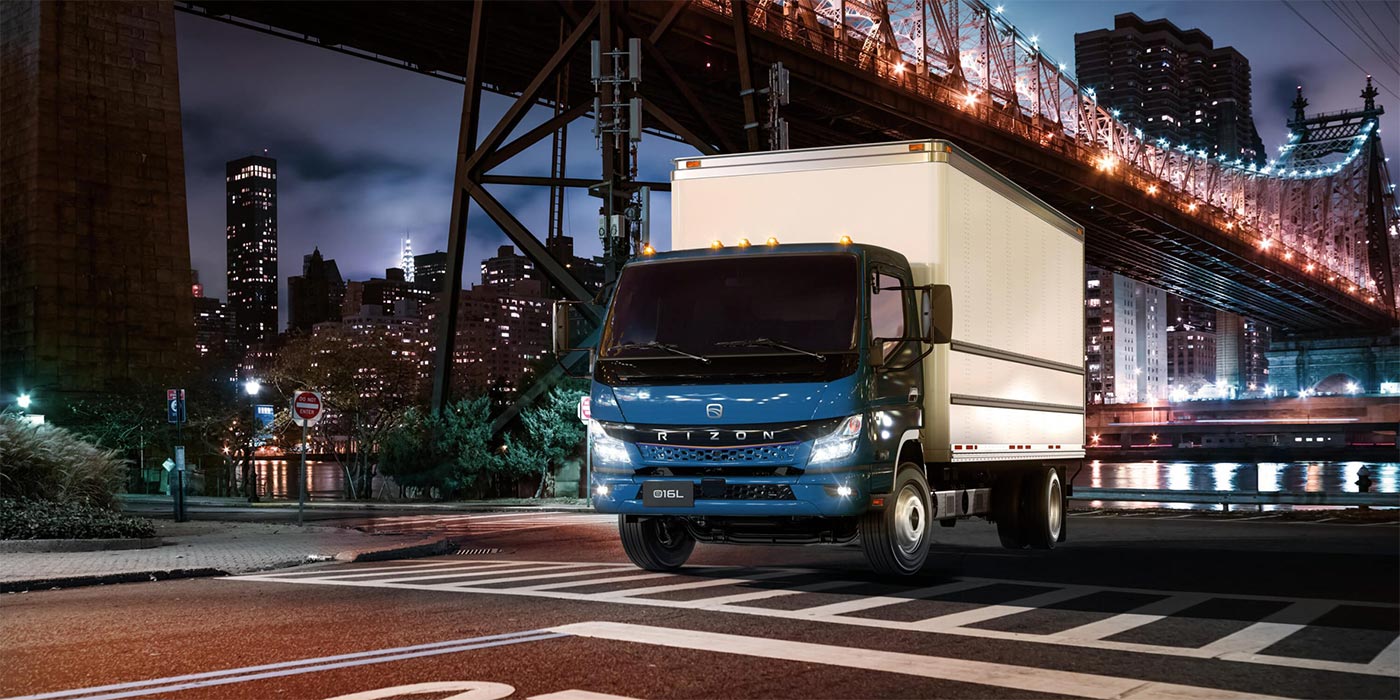For new players in the EV manufacturing space, success depends on finding ways to stand out. That means designing your charging stations with aesthetics top of mind and including software out of the box to integrate with future EV innovations. It also means doubling down on using high-quality, automotive-grade hardware to ensure the reliability of the product is as close to 100% as possible. This is exactly the strategy Autel Energy took when Autel entered the EV charging market, according to John Thomas, COO of Autel Energy North America – and he says it’s working.
Of course, Thomas says, Autel Energy began manufacturing EV chargers with a leg up in the marketplace thanks to its pedigree of creating diagnostic tools to connect and communicate with vehicles on a deeply critical level. As a result, Thomas says he knows better than anyone how important reliability is in the automotive industry.
“We build our own software and we build our own hardware, which includes all the way down to the board level. Those green boards with all the connectivity and the wires and the microchips on them? We actually do that ourselves and we do that to OEM standards,” Thomas says. “That helps position ourselves strongly in the marketplace. Now, in the EV charging market, people are talking about 97% [reliability] and how great that would be, but if your phone doesn’t work 3% of the time, you’re not a happy camper at the end of the day. We believe the charging event has to be similar. When we go to a gas pump, the gas pump works all the time, and a charger also has to do the same. So, that’s our target. We’re going for 100%.”
On this episode of The Amped EV Podcast, Thomas joins us to explain what it takes to gain consumer trust in a crowded market, what EV charging station customers really want, and why Autel Energy is investing so much in future-proofing technology integration like Plug and Charge and bi-directional charging.
Want more Amped EV podcast? Click here.
Here’s a transcript of the show:
David Sickels: Hello, and welcome back to The Amped EV Podcast. My name is David. I am the Editor for The Buzz.
Jason Morgan: And I’m Jason Morgan, Content Director for Fleet Equipment. Hey, man. Thanks for having me back. This is fun.
David Sickels: Of course. You’re welcome anytime.
Jason Morgan: Okay, well, I do have a surprise for you. If you’ll remember, I promised a surprise about a year ago too. Your reaction was better this time. I feel like the first time it was confusion, because were like, “What? This is it?” It was a charging station at a bank and I was very excited about it. And you’re like, “Well, you have problems, but I understand your excitement.” Because that’s when it was happening.
David Sickels: That’s right, that’s right.
Jason Morgan: It was happening. I saw it out in the wild, it was one of the first times in Akron Ohio, Fairlawn area where we work, that it was just out there. That picture, though, was right here at Babcox world headquarters, 3550 Embassy Parkway, with an employee’s car charging. That was not a setup. I was just walking by it one day and famous editor, Alex Crissey…
David Sickels: Infamous, I would say.
Jason Morgan: Well, both, famous for being infamous. That is his car he was charging. We had a charger installed earlier this spring. Walking by, it was rolling. He was charging. Seen it a couple of times now, getting energy right here at Babcox. It’s just interesting how a year ago, wasn’t even on our radar. Now, we’re charging, we got power.
David Sickels: You know who installed that charger?
Jason Morgan: No.
David Sickels: It is our next guest. Well, he didn’t actually do it himself. I doubt he did. It was his team, Autel Energy.
Jason Morgan: Oh, cool.
David Sickels: Yeah. So we are talking with Autel Energy today and the reason that I wanted to have on John Thomas, he is the COO of Autel Energy North America. I wanted to talk to him because Atuel Energy is a fairly new player in the EV charging space and they are approaching EV charging in a very unique way. It has a lot to do with the pedigree of Autel itself, creating diagnostic tools and all of that and communicating with the vehicle itself, which has a lot to do with EV charging. So I wanted to dive into that a little bit. I got John on the show. Do you want to get to the interview?
Jason Morgan: Yeah, that sounds great.
David Sickels: Let’s get right to it. John Thomas, thank you so much for being on the show with us today. So tell us a little bit about Autel Energy. It’s a fairly new vertical for Autel. What made you decide that this was a space that you wanted to be in?
John Thomas: Well, hey, first before we start, I am totally amped to be here today.
Jason Morgan: All right. That’s awesome. I’m amped now too.
David Sickels: I am also amped.
John Thomas: It’s totally cool. It’s really an interesting thing. Why am I excited to be in this space? For me, it’s one of those things, it’s really empowering to be in something where you feel like you’re really making a difference at the end of the day. And I’ve gone through my career, I’ve been in the automotive industry for 30 years. I’ve sold sunroofs and convertibles and heating systems, and eventually into EV charging. And, this is really something at the end of the day where I’m excited that I’ll be able to tell my grandkids someday that I was part of something special, that transformed the automobile industry in the last 100 years. So, I think that’s the reason for me, that I’m just super pumped about being in the automotive space here, in EV charging.
David Sickels: Excellent. And then so, piggybacking off of that, why did Autel, you think of Autel, you might not immediately think of EV chargers, so what made Autel jump into that vertical?
John Thomas: I think what we saw as a company, we’re trying to figure out where to best utilize our assets. Everybody’s pivoting now and trying to figure out what’s the best space for them. And, Autel, being in automotive diagnostics and tools, this was an easy lift for us. So, we understand how to communicate with a vehicle where most people in this EV charging space, they’re Cloud connectivity guys, software guys, maybe a hardware guy or two, but they don’t really deal with the car so much, especially on an intimate level like Autel does.
And, we thought that the ability to connect with the vehicle is going to become very important, obviously through the charging events. And, we said, “Let’s take what we know and let’s do that really well in a different segment.” So, that’s really the antithesis of how we got to where we are today. And, I think it’s really paying off. People are really responsive to that answer at the end of the day. They’re going, “Yeah, you’re right. Most people don’t understand how to connect or talk to a vehicle.” And when we talk about ISO 15118 or Plug and Charge, that whole event is about being able to communicate with the vehicle and do that seamlessly. And, that’s what Autel does extremely well in our current business.
Jason Morgan: Yeah, for sure. The pedigree from the automotive, and as you mentioned the software component of that, it’s not just plugging something in and getting a charge like we think of now when we go home and plug in an outlet. There’s a software interface there. Stepping back for a minute, because like you said, this is a growing space, it’s an exciting space. It’s also becoming quite a saturated space as people move into this market segment. How do you differentiate yourself and how do you get people on board with what Autel is doing?
John Thomas: I think for us, it’s all about reliable, high-quality, automotive-grade hardware. So, if you talk about the event of EV charging, one of the biggest things we talk about in the industry is reliability and quality. And, people can talk about software, they can talk about connectivity, all important stuff, the app works, and the Cloud works properly, but if the underpinning element of this is the charging event itself. And when I talk to people about Autel at different levels, we have been doing this for two decades. We build our own diagnostic tools, we build our own software, we build our own hardware, which includes all the way down to the board level. So, those green boards with all the connectivity and the wires and the microchips on them, we actually do that ourselves and we do that to OEM standards.
So when we talk to people, people are like, “We don’t even hear those terms when we talk to others in the industry.” So that really helps us stand out, that helps position ourselves strongly in the marketplace. And as you guys know from the automotive side of our business, these people’s businesses with our tools are 100% reliant that if that tool doesn’t work, their business doesn’t run. So, now we go into the EV charging market and people are talking about 97% and how great that would be and all this stuff. If your phone doesn’t work 3% of the time, you’re not a happy camper at the end of the day, and we believe the charging event has to be similar. When we go to a gas pump, the gas pump works all the time, a charger also has to do the same. So, that’s our target. We’re going for 100%.
David Sickels: That’s a really, really good way to put it. You’re right. You go to the gas pump, you expect it to work the same way no matter which gas pump you’re at. That makes a lot of sense. So speaking of standing out, I thought this was really interesting. Your MaxiCharger won both the IF and Red Dot Design Awards in 2022. They don’t just hand these things out to anybody. So from that standpoint, how is Autel Energy thinking about charger design differently?
John Thomas: I think what we feel is, it’s super important. So, the aesthetic at the end of the day, what you see is a lot of these chargers look like, to be honest, ugly robots and people are going to put these in front of their businesses. It’s an element that they want not to stand out. They want it to integrate well. And, when we talk to car dealers and people like that, they spend millions of dollars on their car dealership. The last thing they want is something big and ugly sitting right directly in front of it. And these things are typically out front and center when you’re talking about public charging.
So, when people walk into, let’s say our display at an auto show or at CES or whatever, now it ACT very soon, they’re going to walk in and they’re going to say, “Wow, these things look like Apple products and they look elegant and they look seamless.” And for us, that was really important, but also what’s equally important is what’s inside of them. It’s nice that it looks pretty, but it has to be really robust. And we thought about when we designed and developed them, we thought about the total experience and not only the experience for the person that’s using it to fuel their vehicle, but also for the person who’s maintaining it, operating it, and doing the O&M on the backside. So really want to make those really seamless, easy events for everybody.
Jason Morgan: So as you bring these to market, what applications or what market segments are you really focusing on? You’ve already mentioned a few here. We got home charging, we got automotive at a commercial location charging. I talk a lot about heavy-duty charging for trucks. Are there any segments that you’re really focused on here, going forward?
John Thomas: All of them. No, when we first started this journey, let’s say in the U.S., we started much earlier in Europe, we started about a year and a half ago in Europe. In the US really, we started actively, I would say September of last year when we launched at the Detroit Auto Show. Before that, we were in our planning stages and we identified 19 different verticals. And that’s everywhere from, as you said, home charging all the way up to utilities, to high-powered charging, to on-highway, commercial real estate arenas. It’s endless. And we get calls, I get so many calls a day, it’s totally at a different world where you have your customers calling you and saying, “Hey, I’ve been told by my boss we have to do this. And yesterday I was the maintenance director and I didn’t know anything about electricity and I ran a fleet of trucks or I ran a stadium and now I got to get into EV charging.”
So they’re coming to us as a trusted advisor if you will. And that’s the way we’re trying to position Autel too, is we’re not just an EV charging company, but we’re somebody you can come to, and we know a lot about the industry, we have a lot of knowledge in our backside. At the New York Auto Show, we just launched our new mascot, “StEVie,” which was fun. And the whole idea behind the mascot is that he’s able to connect with the younger crowd and get people excited and empowered about EV charging because it’s coming and we all have to find our way. And it’s not on one person to send that message, but it’s on a whole group of people.
David Sickels: So as you alluded to there, a lot of people, when they’re looking for an EV charger, they’re not exactly sure what they need to be looking for. There are so many out there, they don’t know what kind of software they need, or what’s best for them. So do you have any tips for a consumer or maybe a business owner who’s looking to install their first EV charger? What do they need to look for? What are some of the things that they need to know before diving in?
John Thomas: I think sometimes, people go right to price and Autel has been very price competitive in the market, but I don’t think that should be the driver. This is something that you have to count on, on a regular, reliable basis at the end of the day. And typically what we use is either use cases or customers that are using it today. And when customers talk about working with Autel, it’s super special. It feels good and it starts with us. It starts with the way we think. We want to be there for our customers at the end of the day.
So when you call, you get a person. And when I talk to folks like you all the time, they say, “What’s different about Autel?” I said, “We actually call people back,” which sounds really funny. You tell somebody that and they’re like, “Well, why is that special?” And I’m like, “Well, apparently you haven’t been in the EV business very long, because once the hardware goes in, sometimes you never can find anybody to either talk to about it or service it or help you through that.” So we’re creating a total experience at the end of the day, and that customer care and that customer experience is speaking volumes and it’s leading us to the promised land for opportunity and growth.
Jason Morgan: How do you extend that relationship with your customer to guide them through? I’m thinking a lot of the commercial side too, where I’m not just putting one charger in my home, I’m putting five, six, maybe down the line, 10, 12. I want to be able to make an investment that I’m not going to have to rip up the ground in five years and do this all over again. What advice or guidance are you walking people through on a commercial level to make sure they’re getting the charger and the scalability for their application?
John Thomas: So when we talk typically about those kinds of scenarios, we’re always talking about future-proofing. So is this product going to be the right product not only for today but in five years and 10 years? And a lot of what Autel is doing, and we do it in our diagnostics tools as well, is we’re putting protocols and systems within them that maybe aren’t even useful in the market today. So we talk about ISO 15118, which is the Plug and Charge. Most cars can’t do that today, but we’re already thinking about that. We think about OCPP compliance, so the ability to connect to other devices and other systems, so that you can use the same charger. So you don’t have to rip out your charger in five years. We talk about higher power levels. So we’re talking about on the AC side, 19.2 kilowatts.
Most cars onboard chargers can’t take 19.2 kilowatts today, but we know the trend in general with the OEMs as we talk to them. They’re going to bigger and bigger onboard chargers, so that it can provide more power faster on the AC side. On the DC side, we’re doing the same thing. We’re talking about up to right now, 720 kilowatts. So we should be launching that in Q3 this year. So we’re thinking about not only the vehicle, and I think this is one of the sad things about what happens in EVs, we talk a lot about cars, light-duty vehicles. We don’t talk enough about medium and heavy duty. And the lifeblood of what happens in America happens in medium- and heavy-duty. How we move and ship goods around the country and Autel’s already starting to orientate our product line to be able to accommodate those bigger, faster charging events, not only for infrastructure on highway, but for those commercial vehicles.
Jason Morgan: Awesome. A man after my own heart, love hearing that.
David Sickels: You talk a lot about future-proofing and making sure that you are ready for a lot of that. I watched your keynote during the Detroit International Auto Show, and during that you brought up the MaxiCharger DC V2X home charger, which has bidirectional charging capability. And you said during your speech that this could revolutionize the way energy is managed well into the future. Can you tell us a little bit about what you mean by that?
John Thomas: Yeah, sure. So, I think in the industry today, we all know we’re at a 5% adoption rate. So we’re pretty low on the radar screen right now, but that’s going to grow and grow. So, starting to look forward about what’s the next challenge, what are the next issues we’re going to run into? And everybody gets really stressed out when you talk about available power, is there going to be enough? Can we manufacture in whatever way we do it, enough available power out there in the marketplace? And, so, what we look at is, hey, by the way, I live in California, we’re a little bit oddball, but we do a lot with renewables here. So between solar and hydro and other systems, and wind, we generate a lot of renewable energy. We can’t use it all. We’re actually either selling it to other states or crazy enough, we’re paying other states to take it.
And that’s because we have nowhere to put it. And this is where we see this whole bidirectional opportunity coming into play. So as we grow the battery bank out there, instead of building battery farms, you have a mobile battery bank. And as you guys know, most of most vehicles don’t move 90% of the time, most of the time they’re parked. So if these vehicles are all connected and we’re able to shift that power either into a battery or out of a battery at some point in time, then we have an opportunity to really store energy and get us maybe off of coal-fired plants at some point in time. School buses, maybe in a city, which they’re all over the country, become a micro-grid in that city. It’s a power plant. So I can pull energy out of those school buses and put them where I need it, when I need it, and how I need it.
This stresses people out. They start getting, “I don’t want people taking my energy.” And I get it, we’re going to figure that out. We’re not there yet, but we’ve got a lot of smart people out there that are going to use data and analytics and AI and all that stuff to know when we have to move. And we’re not talking about emptying somebody’s battery, we’re talking about taking micro bits of energy and putting it somewhere else. Because when you do that out of a lot of batteries, it’s a lot of power that you can use.
David Sickels: Wow. Yeah, I look forward to that.
John Thomas: That’s pretty cool.
David Sickels: Yeah. That’s a very, very cool vision for sure. Well, John, really appreciate you taking the time today. This was awesome. I learned a lot and I really look forward to seeing you at ACT Expo. That’ll be great.
John Thomas:
Yeah, that’ll be great. I’m looking forward to you guys and this was a fantastic event and I love being on the Amped show today, so thank you very much.
David Sickels: Thank you. Take care. Okay, Jason.
Jason Morgan: Awesome.
David Sickels: What’d you learn?
Jason Morgan: Holy moly. I learned a lot. I liked the sticking really with the ending theme there and his vision for what charging could mean in a bidirectional world. I know it’s early days, I know we’re not there yet, but I hadn’t thought about it in the terms that he put it in there. If we’re all like, look, I go take my kids in the museum, we were at the science museum a couple of weeks ago. If I have an EV, I plug it in. I’m there for eight hours. If we’re at a level two charger, is it going to take eight hours to get this charge I need to make it home?
I’m setting it at 80%. That’s all I need there. It could ebb and flow, and the energy could ebb and flow, as long as when I get back to my car, I’m ready to go. On the fleet side, I do understand how there is, on the commercial side, you want to make sure there is that range anxiety. They manage their charging far more closely, but again, if there’s revenue opportunity there and they understand how the model works and that their trucks will always be charged, there’s an opportunity to eat away at those costs a little bit.
David Sickels: Absolutely. And he mentioned, 10 years down the line here, batteries are going to look completely different. The way that we’re transferring energy is going to be completely different. So we have a future to look forward to where we can integrate this V2X technology. We have a lot that is unknown right now, but just thinking about that future is really fulfilling. It’s really nice. Another thing that he mentioned, Plug and Charge and how important that’s going to be. A lot of vehicles today, they don’t have that capability yet, but they’re getting there. That is something that is probably not 10 years in the future necessarily. That’s coming a lot sooner rather than later. And having that communication between the vehicle and the charger and vice versa, that’s going to be extremely important that that happens reliably. And it’s something that people can look forward to when it’s just like a gas pump, you plug it in and you go.
David Sickels: Cheers. Thanks for joining us today. We’ll see you next time.






